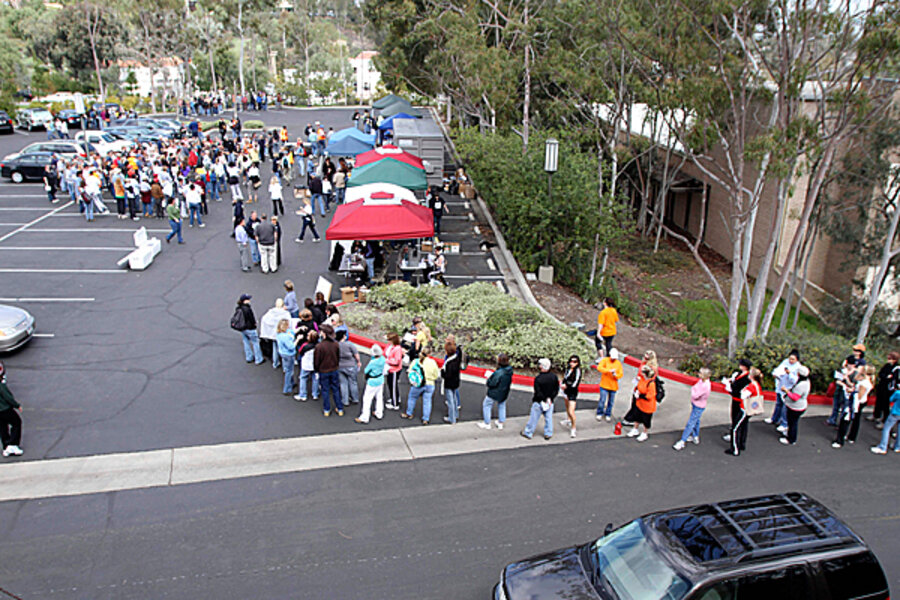How Facebook and Twitter changed the search for Chelsea King
Loading...
| Los Angeles
An arrest has been made and criminal charges filed in the case of Chelsea King, the San Diego teenager who went for a run in the park and never returned this week. Convicted sex offender John Albert Gardner III was arraigned in San Diego on Wednesday, pleading not guilty to charges of murder and assault to commit rape.
As thousands of mourners walk the sidewalks and streets in silence, holding candles and tearfully embracing, national forensic experts say a new era of technology has arrived that significantly changes the nature of such incidents – from search and rescue to prosecution, and, in cases that end tragically as this one did, to the grieving process.
Several trends are already emerging from Chelsea's case.
• One is the large role social networking websites Twitter and Facebook played in helping to mobilize thousands of volunteers to look for Chelsea and a suspect in her disappearance. The Facebook page set up by Chelsea's family had grown to upwards of 70,000 members by Tuesday, at the height of the search for her. Organizers say more than 6,000 volunteers came together to scour the area surrounding the park where her car was found.
• A second trend will come as law enforcement agencies try to construct a timeline for the suspect, derived from testimonies of those who saw him before and after the incident.
Chelsea's case highlights how law enforcement agencies are more efficiently gathering and cataloging information. Ken Dixon of MIR3, a San Diego-based company which has been developing communication networks for governments, universities and large corporations since 1999, calls the coming era "important communications."
“In the old days, you lined up people around the block. Each would write down their phone number and expertise and bearing to the case, and getting back to them was tedious and slow. Now you can aggregate and annotate responses, contact and deploy with lightning speed," he says.
“State-of-the-art systems today go 'social-networking’ one better,” Mr. Dixon says, “because they have many more ways to collect and annotate responses in real-time.” He says there is now far greater “incident management capability” because law enforcement can build a chronology of who said what, where, and when much faster. "It’s like Twitter on steroids.”
• A third will show itself as the community, family, and friends try to keep in touch, mourn, and share photos and stories.
“The compelling story of this murder is the role of technology in addressing all these crucial issues,” says Elizabeth Dowdell, an associate professor of nursing at Villanova University who works with the FBI in forensics and Internet safety.
“The community support tapped into by these systems will help San Diego cope with their sense of loss, and piece together the many details of the case to create needed court testimony," she says. "Equally important are the living memorials that can be created to mitigate the need for parents who hold onto picture collages and keep the bedroom of their deceased children unchanged for year upon year.”
Facebook recently changed its policy to allow family members of deceased people to memorialize their personal pages, preserving the popular "wall" as a place for people to leave remembrances and messages of support, and limiting access to confirmed friends.





